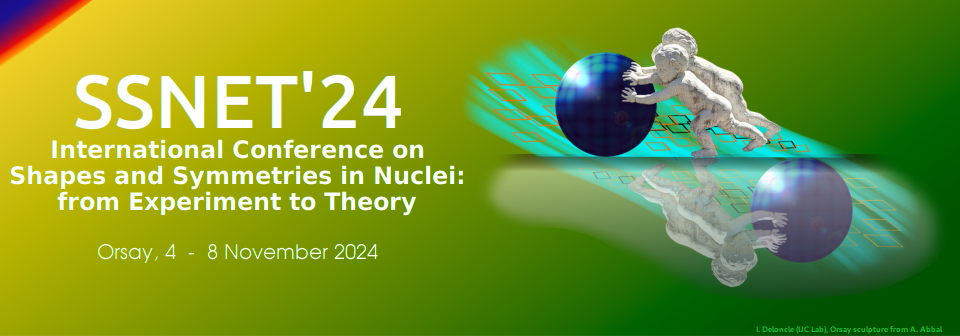Orateur
Description
The radioisotope thorium-229 features a nuclear isomer with an exceptionally low excitation energy of ≈ 8.3 eV and a favourable coupling to the environment, making it a candidate for a next generation of optical clocks allowing to study fundamental physics such as the variation of the fine structure constant [1,2]. While first indirect experimental evidence for the existence of such a nuclear state dates from almost 50 years ago, the proof of existence has been delivered only recently by observing the isomer’s internal electron conversion decay [3]. This discovery triggered a series of successful measurements using the α-decay of uranium-233 of several properties, including its energy, an important input parameter for the development of laser excitation of the nucleus. In spite of recent progress, the difficulties to observe the isomer’s radiative decay remains a dark spot of this research field. The development towards a "nuclear clock" was further hindered by a too large uncertainty on the isomer energy. The study of the β-decay of actinium-229 inside a large-bandgap crystal at the ISOLDE facility at CERN lead to the first observation of the radiative decay [4] and set the scene for direct laser excitation of the thorium-229 nucleus [5]. In this contribution, the nuclear clock concept is introduced and recent developments are discussed.
[1] E. Peik et al., Europhys. Lett. 61, 2 (2003).
[2] E. Peik et al. Quantum Sci. Technol. 6 (3), 034002 (2021).
[3] L. von der Wense et al. Nature 533 (7601), 47–51 (2016).
[4] S. Kraemer et al. Nature 617, 706-710 (2023).
[5] J. Tiedau et al. Phys.Rev.Lett. 132 182501 (2024).

